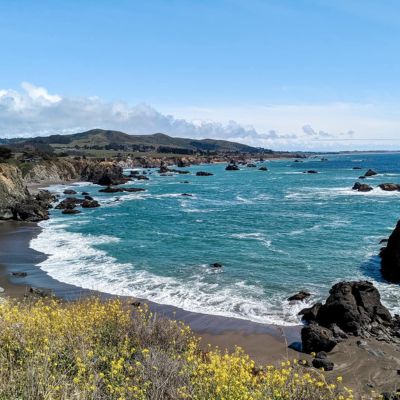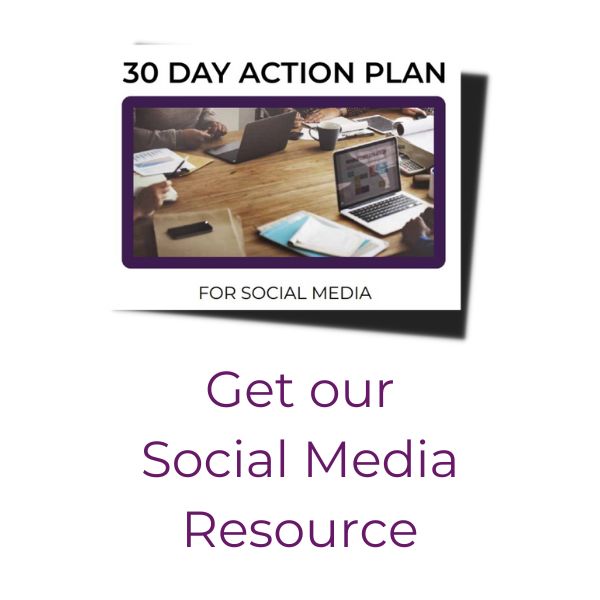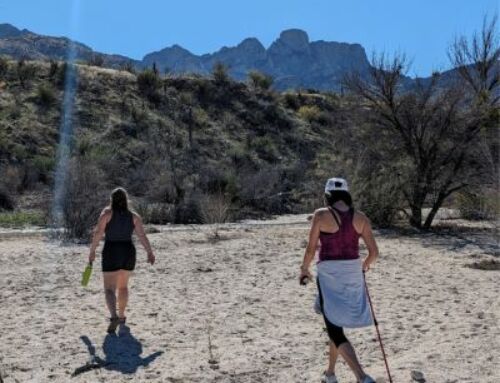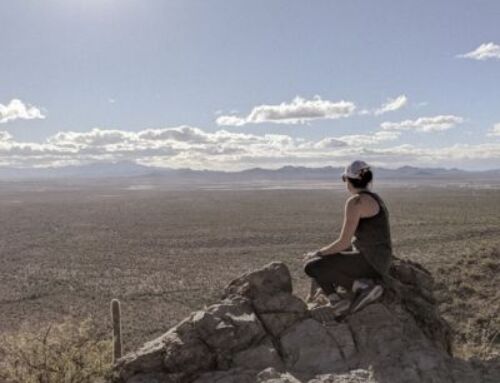
9 Tips for Maintaining Productivity While Working and Traveling
Over the years, I’ve been leaning into working while traveling. I’d argue that if your career or business can be flexible with where the work is completed, then it’s time to start planning working vacations.
If you’re new to working while traveling and have doubts about working while on the move, fear not. I’ve got you covered with my top tips to help you balance work and travel, ensuring you stay productive while having fun.
I’m getting ready for a working vacation over the holidays. I have some tricks that help me manage my business while I’m away.
“Working on the go? I couldn’t possibly do that. I’d never get any work done.”
When I began my career as a salesperson, I became accustomed to blending work and travel. This involved covering a vast sales area across the United States.
However, when I hung up my hat as a salesperson and pivoted to marketing, traveling became a distant memory. Lately, I’ve found myself constantly pulled in two opposing directions.
Traveling has taught me many ways to live a satisfying life. It’s not just about following a strict routine. I prefer structure and organization, but I’ve learned to appreciate different approaches. While corporate culture preaches a single path to happiness, my personal experiences tell me otherwise.
So, what actions do you take when work and travel intersect? Perhaps you’re contemplating remote work to extend your time off but are concerned about finding the right balance. It’s common for productivity to go out the window once you board a plane, check into a hotel, and catch your first glimpse of the ocean, right?
I literally brought homework with me to Hawaii several years ago with a 22-month-old in tow while on a family vacation. I volunteered to supervise nap time while everyone explored the island so that I could get those assignments done.
So, if any of these thoughts or concerns resonate with you, you’ve come to the right place. I’ve had the same worries and gone on the journey anyway. I’ve learned how to enjoy new places while handling work, being a mom, and studying.
Here are nine effective strategies to optimize your workflow and maintain productivity, whether you’re working remotely from a café in the Tennesee or responding to emails while sipping Mai Tais on Oahu’s North Shore.
1. Select a Work-Friendly Destination
Choosing a travel destination with a reputation for being remote work-friendly is a wise move. What does this entail?
– Booking accommodations in hotels or an Airbnb with high-speed WiFi.
– Opting for major cities with strong cell phone signal coverage, abundant coffee shops, and coworking spaces.
– Picking a location within a reasonable time difference from your working time zone or your client’s time zone.
Opting for destinations that offer the necessary infrastructure for remote work minimizes the risk of encountering issues. Suppose you’re unsure about a city’s suitability for remote work. In that case, resources like Nomad List can provide valuable information, including cost of living, internet speed, safety, free public WiFi availability, coworking spaces, and the best neighborhoods. I believe Colorado or Arizona are good choices. They are close to Central Standard Time, which is beneficial for remote work. Additionally, there is WiFi available in many locations.
2. Prioritize Accommodation Quality
One of the biggest pitfalls I’ve encountered repeatedly is underestimating the importance of selecting the right accommodation. While a fast and stable WiFi connection is crucial, it’s not the only consideration.
The type of accommodation and your budget are equally vital factors. For instance, if you plan to work remotely from expensive destinations like Napa, CA, you may only be able to afford a location in the mountains or budget hotels. While these options help keep costs down and provide opportunities to meet other travelers, they can negatively affect productivity and job performance.
Imagine trying to join a conference call at 6 a.m. while others traveling with you are asleep, and you’re in the mountain range at a gorgeous Airbnb, and the WiFi is slower than dial-up, and cell service is non-existent. It’s a recipe for disaster.
When working remotely, it’s essential to choose an environment that enhances your productivity, whether it’s having an entire Airbnb apartment to yourself or access to a hotel lobby or café where you can work. In more expensive destinations, you may need to get creative or reserve them for your time off or weekend getaways. Skimping on accommodation is a quick way to hinder your productivity unless you have a reliable workspace, such as a coworking facility or coffee shop.
Pro Tip: If you’re uncertain about the WiFi quality, don’t hesitate to ask hotels or Airbnb hosts for a screenshot of an internet speed test.
3. Identify Your Most Productive Times
Do you know when you’re most productive during the day? While full-time employees often have fixed working hours dictated by clients, customers, or team time zones, flexibility in your schedule allows you to plan work and travel effectively. Understanding your peak productivity times can make a significant difference. For example, my creative energy peaks in the morning and late afternoon, so I schedule essential tasks accordingly.
Pro Tip: If you work a fixed 8-4 or 9-5 schedule, opt for a time zone that is one or two hours behind your home time zone when traveling. This helps you stay on your work schedule and aligns your body with your usual time zone. An added benefit is that you finish work an hour or two earlier without adjusting your work schedule to the local time zone, a strategy I love.
The middle of the day is good for exploring and doing easy tasks like administrative work and answering emails. It’s also when I fit in quick adventures, like visiting a new coffee shop or going for a walk to explore the area. Creating a routine based on your energy flow can prevent burnout. It can also help you find the best times for fun activities without sacrificing productivity. This is true even if your schedule is unpredictable.
4. Plan Your Work and Travel Simultaneously
To balance work and travel effectively, you must master time management. Knowing how you’ll spend each day ensures you stay on track with your workload and allows you to plan sightseeing activities. Time blocking your calendar is a useful technique. Here’s an example of what it might look like:
7:00 – 11:00: Emails, work on your to-do list, Internal meetings, and client calls
12:00 – 1:00: Lunch at a nearby cafe
1:00 – 3:00: Light admin tasks and email catch-up
3:00 – 5:00: Projects and research or wrap up your work day, depending on the time zone you are in
5:00 – 7:00: Exploring local businesses, hiking, or happy hour
During the week, you can plan small sightseeing activities, remaining flexible if your to-do list becomes lengthy. Reserve weekends for more extensive, full-day adventures or weekend getaways.
5. Simplify Your Itinerary
As someone who enjoys meticulously planning itineraries and researching activities in advance, it’s tough to suggest this. Still, it’s essential to downsize your itinerary when combining work and travel. At the same time, it’s easy to pack your days with sightseeing, dining, and day trips when on vacation; working while traveling requires a more balanced approach.
Attempting to squeeze too many activities into a single day can lead to decreased productivity and increased stress. It’s simply not sustainable.
Focus on having no more than one or two flexible ideas for workdays, as it’s crucial to maintain fluidity. This approach allows you to adapt to last-minute meetings or other unexpected changes.
Combining work with travel often means exploring destinations slower, making longer stays in one place a viable option. Remember, travel should enhance your work experience and open up new possibilities, not hinder your productivity or cause undue stress.
6. Make the Most of Transit Days
Don’t wait until you arrive at your lodging to start planning your work schedule. If you have a substantial workload, consider ways to incorporate work during your travels. For instance, if you’re road-tripping to a nearby destination with a solid cell phone signal and Bluetooth calling capabilities, schedule calls that you’ve been meaning to make.
At the airport, prioritize tasks you can accomplish with slower WiFi, such as responding to emails or drafting reports. For tasks requiring a stable internet connection, save those for non-travel days or work on offline versions during transit.
Travel days can be busy, but they are great for getting work done on planes, buses, and trains. Sometimes, I even use my hotspot to send emails from the passenger seat of a car. By making the most of these less comfortable situations, you can free up more time later to relax and explore.
7. Research Coworking Spaces and WiFi-Friendly Options in Advance
Coffee shops, cafes, and hotels are popular choices for remote work while traveling. I often dedicate days with fewer meetings to exploring new coffee shops or hotel lobbies because I enjoy the vibrant atmosphere and novelty they offer.
When following this approach, my top recommendation is to research these places in advance. Check TripAdvisor, Yelp, or Google for information on WiFi quality or reviews from others who have worked there. If this information isn’t readily available, contact the establishment beforehand via phone, email, or WhatsApp to confirm the availability of public WiFi.
On the flip side, while working from coffee shops and hotel rooms can be enjoyable and provide a change of scenery, it’s essential to acknowledge that these options can be inconsistent regarding reliable workspaces for important Zoom calls and meeting deadlines. The downsides include potential loneliness, missing the office buzz, the need for clear work-home separation, and distractions in cafe settings. This is where coworking spaces come into play, offering a more reliable and consistent environment for productive work.
Additionally, working in a room with fellow remote workers striving to meet their own deadlines provides a productivity boost. It’s akin to the motivation you’d get from an office environment, with the added perk of being in an exciting destination.
8. Organize Your Tech Setup
Having the right tools is important for staying productive while traveling, whether in another state or country. Invest in items that enhance your productivity and prevent procrastination or delays. If you have a tablet or iPad, get a portable keyboard to work on the go without bringing your laptop.
Additionally, consider other essential items like a portable WiFi device, an external hard drive (such as the SanDisk Extreme Portable SSD), a plug adapter and surge protector, noise-canceling headphones, call-friendly headphones,a portable cellphone charger (like Anker charging gear), and a roaming data plan. Anything that improves your efficiency while traveling should be on your packing list.
9. Set Clear Boundaries
If you’re traveling with others, particularly if they aren’t working remotely or have different work schedules, it’s crucial to establish work boundaries before your trip. Explain to those you’re traveling with that you won’t always be available to hang out and will require designated work hours. Setting these expectations prevents you from feeling guilty about declining activities that don’t align with your schedule.
Consider going on digital nomad retreats or traveling exclusively with friends or partners pursuing a work-and-travel lifestyle. This way, everyone in your group understands the balance between work and leisure.
Ready for more?
KMD Wisdom + Wellness is the place to share resources and actionable tips for SEO, website design, event marketing, social media, and more – elevate your marketing well.
If this resonates and you’d like to receive monthly bits of wisdom mixed with wellness ideas to elevate each day in both your personal + professional life, let’s be friends. Subscribe here.








